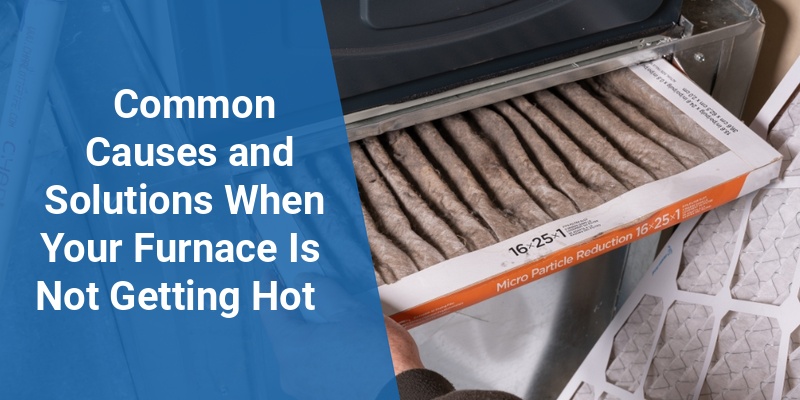A furnace that is not getting hot can turn a comfortable home into an uncomfortable one quickly, especially during colder months. Understanding why a furnace fails to heat properly involves exploring common mechanical and electrical issues, thermostat problems, and maintenance needs. This article offers a comprehensive guide to diagnosing and addressing the most frequent reasons behind furnace heating problems in American homes, helping homeowners restore warmth efficiently.
| Problem | Potential Cause | Key Solution |
|---|---|---|
| Furnace Not Heating | Thermostat Settings | Check and adjust thermostat settings or replace batteries |
| Furnace Ignites but Then Shuts Off | Dirty Flame Sensor or Clogged Filter | Clean flame sensor and replace air filters |
| No Heat, Furnace Fan Running | Malfunctioning Limit Switch | Have a professional inspect and replace limit switch |
| Furnace Makes Unusual Noises | Loose or Dirty Components | Tighten and clean furnace parts |
Thermostat Issues That Prevent a Furnace From Getting Hot
The thermostat controls the furnace operation based on the temperature settings. Often, a furnace not heating properly is linked to thermostat problems. Incorrect temperature settings, dead batteries, or faulty wiring can cause the furnace to remain off or not produce enough heat. Regularly checking thermostat settings and replacing batteries can resolve most minor heating issues. Additionally, a malfunctioning thermostat may require professional replacement to ensure accurate temperature regulation.
Dirty or Clogged Air Filters Impact Furnace Heating Performance
Air filters play a crucial role in a furnace’s efficiency by preventing dust and debris from entering the system. Over time, clogged filters restrict airflow, causing the furnace to overheat and shut off prematurely. This limits the furnace’s ability to reach or maintain a warm temperature. Replacing air filters every 1-3 months depending on usage is essential to keep the furnace functioning at its best. Homes with pets or higher airborne particles may require more frequent filter changes.
Flame Sensor Problems Leading to Furnace Heat Issues
The flame sensor detects if the furnace’s burners are ignited and signals the system to stay on. A dirty or faulty flame sensor can cause the furnace to shut off shortly after ignition, leading to no or insufficient heat. Cleaning the flame sensor with fine sandpaper or steel wool is a common maintenance step to restore proper function. If cleaning does not fix the problem, the flame sensor may need replacement. Proper flame sensor operation ensures the furnace maintains a steady heat output.
Ignition and Pilot Light Malfunctions
For furnaces with a pilot light or electronic ignition system, failure to ignite will prevent the furnace from producing heat. Common causes include a faulty ignitor, clogged pilot tube, or gas supply interruption. Regular inspection and cleaning of pilot lights or ignitors help maintain consistent furnace ignition. Professional service is recommended for gas line or ignitor repairs due to safety concerns.
Limit Switch Failures Affect Furnace Heating Cycles
The limit switch acts as a safety device that shuts off the furnace burners if the system overheats. However, a faulty limit switch may incorrectly signal overheating and prevent the furnace from heating effectively. Signs of this issue include the furnace fan running without heat output. A licensed HVAC technician can test and replace a malfunctioning limit switch to restore normal furnace operation.
Electrical Issues in Furnace Components
Problems with electrical parts, including circuit breakers, wiring, or control boards, can disrupt the furnace’s ability to generate heat. Tripped breakers or blown fuses can cut power to the system, while damaged wiring may cause intermittent heating failures. Regular inspection of electrical connections and ensuring breakers are reset can prevent furnace heating interruptions. Complex electrical repairs should be handled by professionals to avoid hazards.
Call 888-906-9139 for Free Local HVAC Quotes – No Obligation, Just Savings!
Maintenance Tips to Prevent Furnace Heat Problems
Routine maintenance is the best defense against furnace heating failure. Homeowners should:
- Change air filters every 1-3 months.
- Schedule annual professional inspections and tune-ups.
- Keep the area around the furnace clean and free of obstructions.
- Inspect and clean flame sensors and pilot lights regularly.
- Test thermostat accuracy and replace batteries as needed.
Preventive care helps catch potential issues early, ensuring steady and efficient furnace heating throughout the season.
When to Call a Professional HVAC Technician
Some furnace issues require the expertise of a licensed HVAC technician. Situations to seek professional help include:
- Persistent heating failure despite thermostat and filter checks.
- Gas odor or suspected leaks around the furnace.
- Electrical problems or frequent circuit breaker trips related to the furnace.
- Complex component repairs such as limit switch or control board replacements.
- Unusual noises or smells coming from the furnace system.
Professional technicians ensure safe and accurate diagnosis and repair, protecting both home and occupants from potential hazards.
